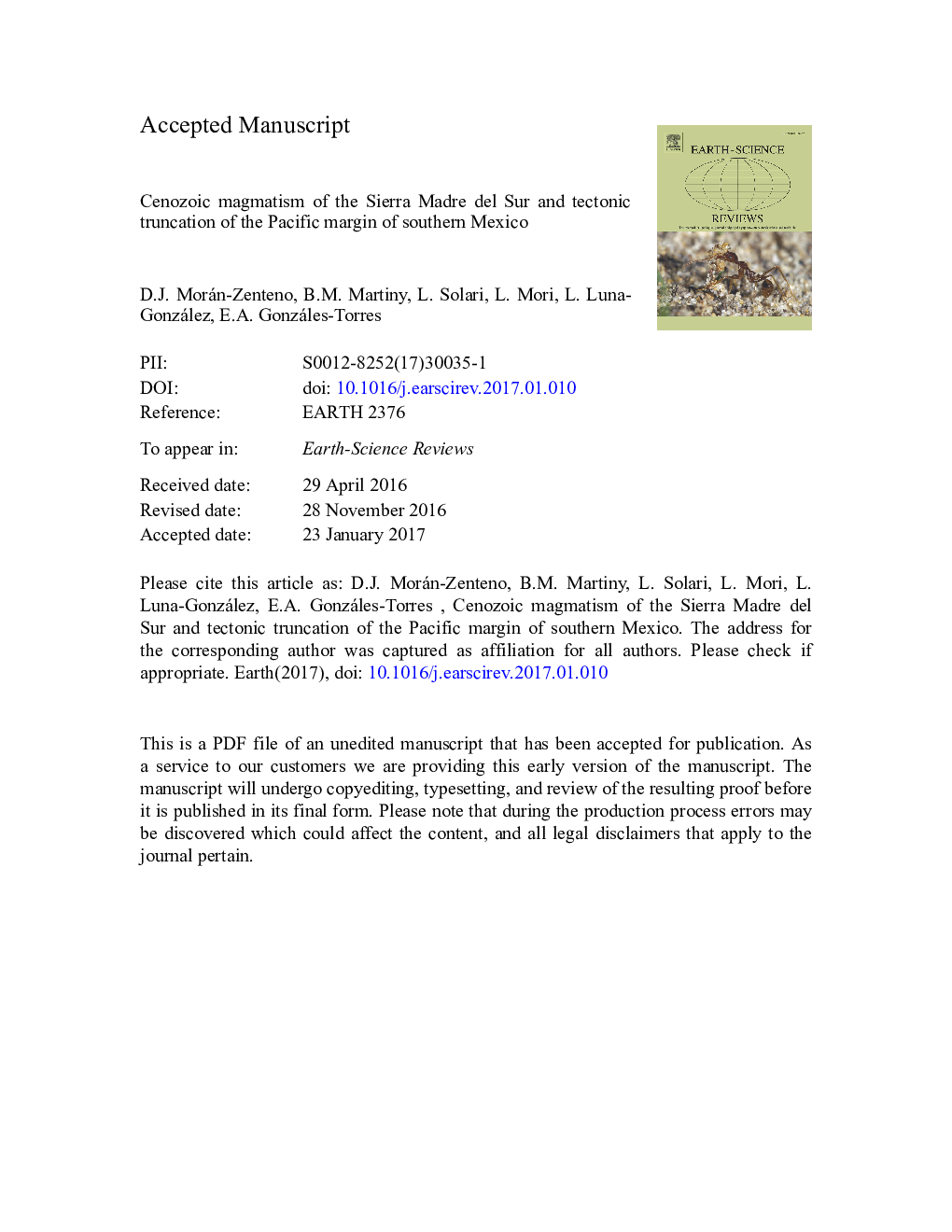| Article ID | Journal | Published Year | Pages | File Type |
|---|---|---|---|---|
| 8912909 | Earth-Science Reviews | 2018 | 113 Pages |
Abstract
The Late Cretaceous-Cenozoic decreasing age trend in the SMS shows three time intervals in which magmatism ceased at different rates. The general southeastward younging trend of magmatism, as well as the left-lateral shear zones of the central and coastal zones of the Sierra Madre del Sur, in combination with constraints imposed by the prevalent model of the Caribbean plate evolution have been invoked to consider the ChortÃs block as the removed segment during margin truncation. The main drawbacks of this model are the mismatch in the chronology of migmatitic complexes of northern ChortÃs and the Xolapa terrane in the continental margin of southern Mexico, and the presence of the Late Cretaceous to present unperturbed marine sequence in the Gulf of Tehuantepec in the assumed trajectory of the ChortÃs block. These considerations and the subduction erosion evidence suggest a more complex scenario than having ChortÃs juxtaposed immediately adjacent to the present-day margin. There are alternative possibilities to explain removal of the forearc, ranging from a western provenance for the ChortÃs block, as has been suggested in other models, to intermediate positions for ChortÃs with a more southern trajectory with respect to the present-day trench. Such a trajectory would leave a broad zone with shear strain structures more susceptible to removal by subduction erosion after the passage of the trench-trench transform triple junction. This would reconcile the evidence of subduction erosion and the indications of the northwestern provenance of the ChortÃs block.
Related Topics
Physical Sciences and Engineering
Earth and Planetary Sciences
Geology
Authors
D.J. Morán-Zenteno, B.M. Martiny, L. Solari, L. Mori, L. Luna-González, E.A. González-Torres,
